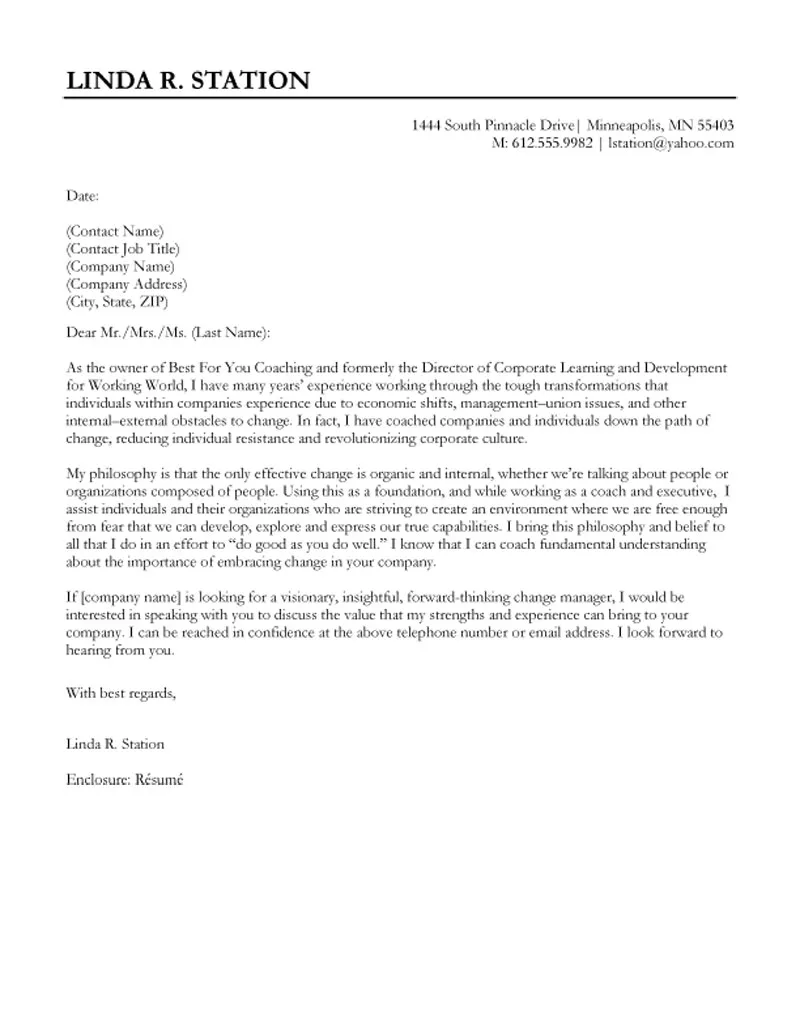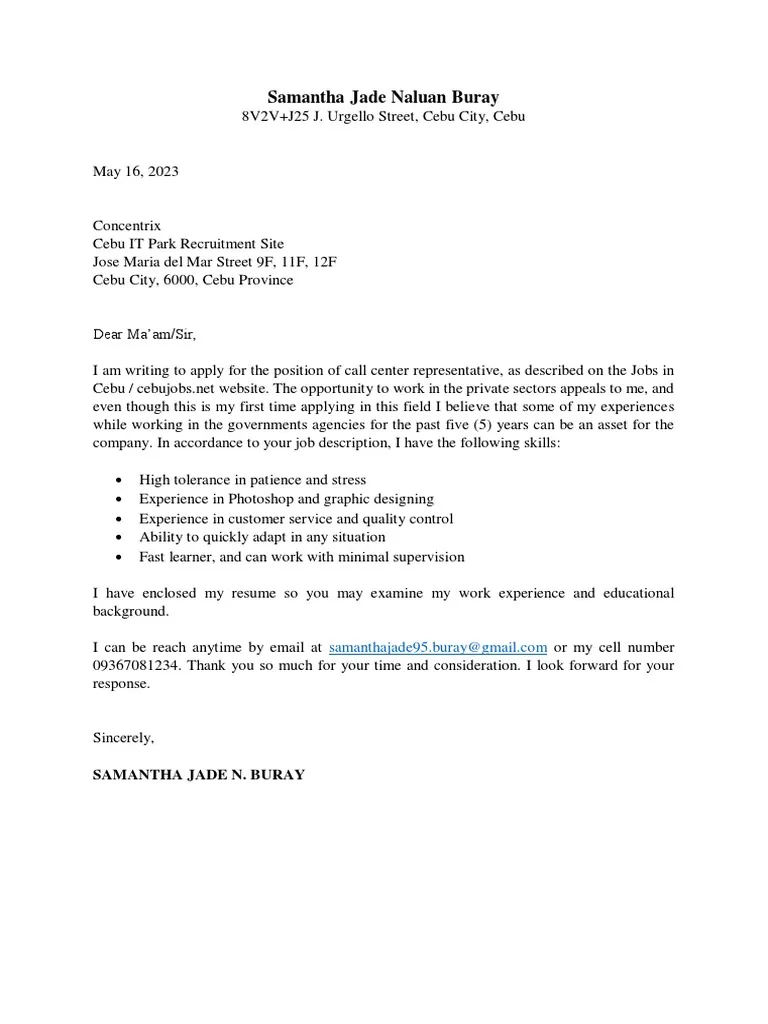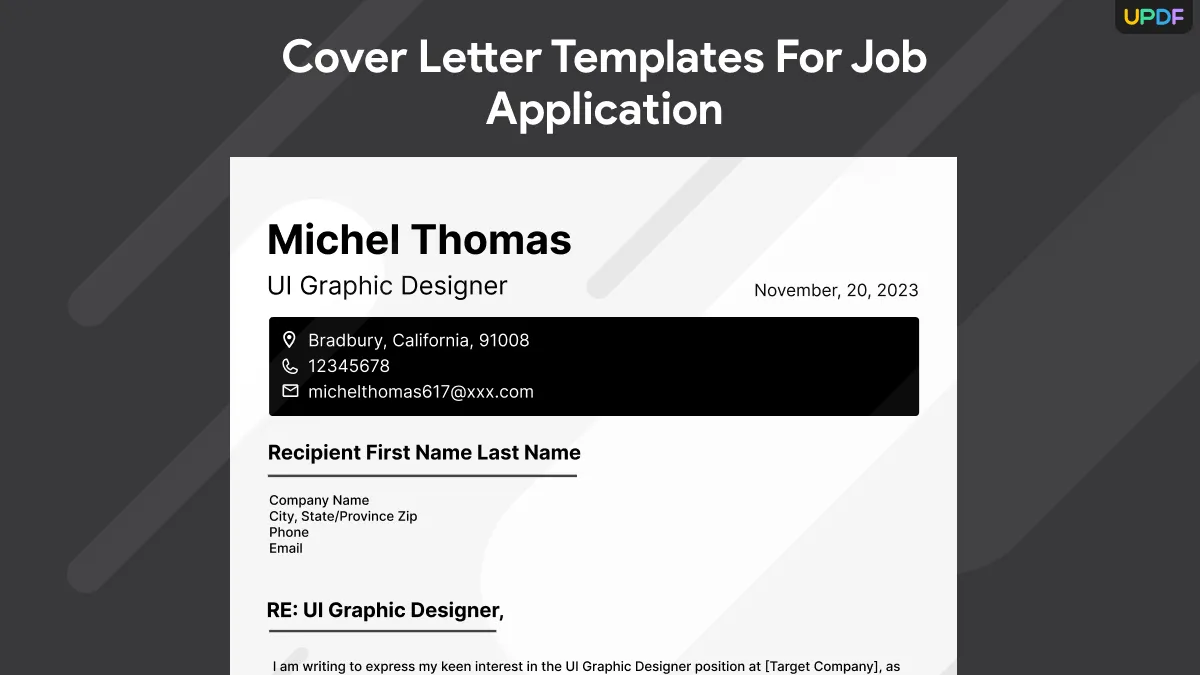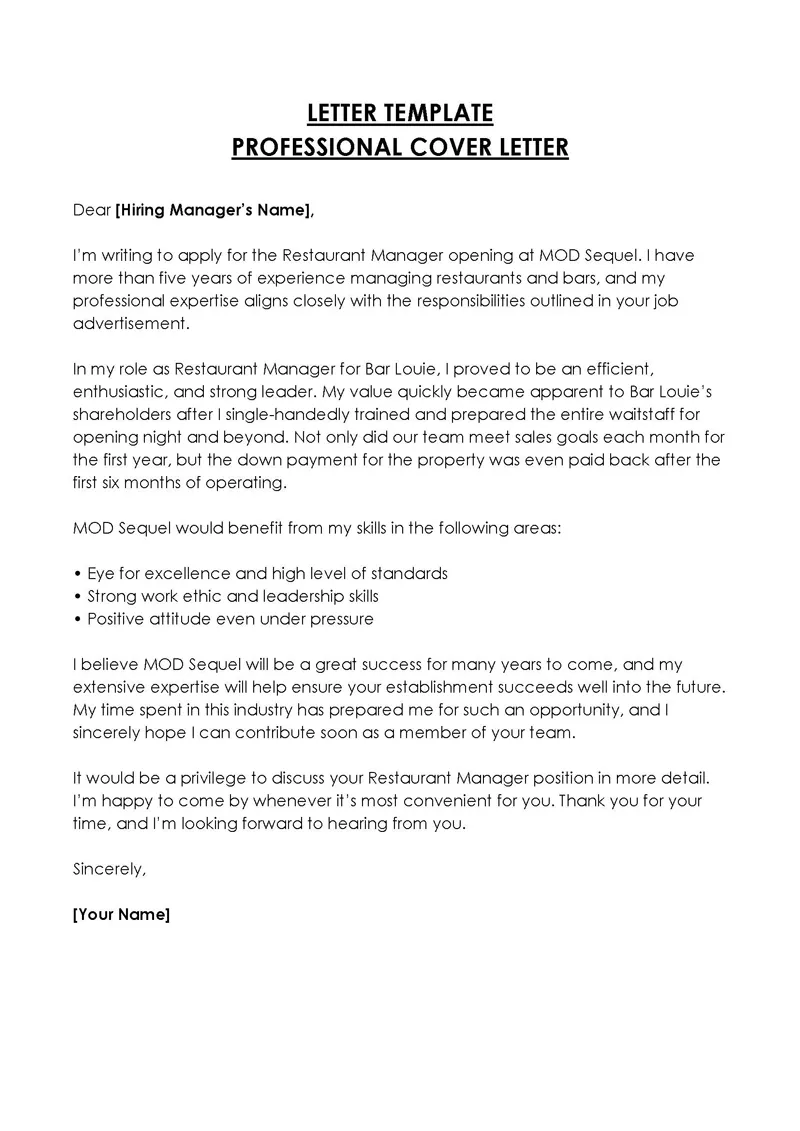Cover Letter Job Application Examples
A cover letter is your first chance to impress a potential employer. It’s a crucial part of your job application package, offering a personal introduction and a platform to showcase your skills, experience, and enthusiasm. Unlike a resume, which presents facts, a cover letter provides context, explaining why you’re the perfect fit for the specific role and company. Crafting a compelling cover letter can significantly increase your chances of landing an interview. This guide offers five different cover letter examples, each tailored to various career situations, helping you tailor your approach for maximum impact. We’ll delve into what makes these examples effective, providing insights and actionable tips to help you create your own winning cover letter, and ultimately, secure your dream job. Let’s dive in and explore how to craft a cover letter that stands out.
Example 1 The Focused Professional
The Focused Professional cover letter is designed for those with a clear career path and specific experience relevant to the target job. It highlights accomplishments, quantifiable results, and a strong understanding of the employer’s needs. This type of cover letter typically begins by immediately stating the position being applied for and expressing enthusiasm. It then quickly moves to demonstrate how the applicant’s skills and experience align with the job requirements. The tone is confident and direct, clearly articulating the value the applicant brings to the table. The goal is to immediately capture the hiring manager’s attention and show that the applicant is a serious candidate, well-suited for the role.
Key Elements in the Focused Professional Example

Key elements include a clear statement of the position, highlighting specific accomplishments supported by data (e.g., ‘Increased sales by 15%’), and demonstrating a solid understanding of the company and the role’s requirements. The letter should also include keywords from the job description, showing the applicant’s familiarity with the industry and the specific needs of the employer. The tone is formal and professional, emphasizing the applicant’s competence and ability to deliver results. The closing paragraph reiterates the applicant’s interest and includes a call to action, such as requesting an interview and providing contact information. This type of cover letter is best suited for applicants with a proven track record and a defined career direction.
Example 2 The Enthusiastic Recent Graduate
For recent graduates, a cover letter is an opportunity to showcase academic achievements, relevant coursework, internships, and transferable skills. This type of cover letter should highlight enthusiasm, eagerness to learn, and a proactive approach. Since recent graduates often have limited professional experience, they should focus on skills and experiences that demonstrate their potential. This includes showcasing projects, volunteer work, or leadership roles. The goal is to convince the employer that the applicant is a quick learner, adaptable, and a valuable asset to the company, even without extensive work history. Emphasizing soft skills such as communication, teamwork, and problem-solving is also key, as these are crucial for entry-level positions.
Highlighting Skills in the Recent Graduate Example
This example should emphasize transferable skills gained from academic or extracurricular activities. Skills such as project management, data analysis, research, and presentation skills are highly valued by employers. Highlighting relevant coursework, even if it isn’t directly related to the job, can demonstrate a willingness to learn and a strong work ethic. The tone should be enthusiastic, professional, and focused on the applicant’s potential. The letter should convey a sense of excitement about the opportunity and a strong desire to contribute to the company. Including a brief statement about career goals and how the position aligns with those goals can further strengthen the applicant’s appeal to employers.
Example 3 The Career Changer Cover Letter

A career changer needs to address the shift in their resume and highlight transferable skills from their previous experiences. This type of cover letter should focus on explaining the reasons for the career change and how previous roles have equipped the applicant with relevant skills for the new position. The letter must clearly articulate the applicant’s understanding of the industry or the new role and demonstrate a genuine interest in the field. It should showcase how the applicant’s transferable skills (e.g., communication, leadership, problem-solving) align with the requirements of the new job. The goal is to convince the employer that the applicant’s background, though different, is a valuable asset and that the career change is a deliberate and well-considered decision. The letter should avoid being vague and focus on demonstrating what makes the candidate suitable for the job.
Addressing the Career Change in Your Letter
When addressing a career change, it’s important to briefly explain the motivation behind the shift without going into excessive detail. Focus on how the skills and experiences gained in the previous career are applicable to the new role. Highlight any professional development or training that supports the career change, such as additional certifications or courses taken. The tone should be confident and enthusiastic, showing a proactive approach to professional development and a strong understanding of the new role. The letter should emphasize adaptability, a willingness to learn, and a genuine passion for the new career path. It’s important to link past experiences to the new career objectives in a clear, concise, and compelling manner, providing employers with the rationale behind the career transition.
Example 4 The Networking Cover Letter
The Networking Cover Letter should always include a reference or how the candidate got in touch with the company, especially if there is a personal connection involved. Networking cover letters are often used when applying to positions where the applicant has a personal connection or has been referred by someone within the company. The goal is to provide context for the connection and to show a deeper understanding of the company’s culture and values. The letter typically begins with a reference to the person who referred the applicant, establishing an immediate sense of credibility. The focus is on highlighting the applicant’s relevant skills and experiences while also demonstrating a strong understanding of the company’s mission and values. Tailoring the letter to reflect the unique aspects of the company and the role is crucial for making a positive impression.
Leveraging Connections in Your Cover Letter

This cover letter leverages connections by explicitly mentioning the person who recommended the applicant. It provides a brief overview of how the applicant knows the referrer and the mutual respect that they have. In the cover letter, it is useful to explain the reason the applicant is the perfect match for the job. It is important to showcase the applicant’s accomplishments and relate it to the job requirements. Tailor the letter to highlight how the candidate’s skills and values align with the company’s culture, demonstrating that the applicant is a good fit. The tone of the letter should be professional, and it should convey enthusiasm and a genuine interest in joining the company. The goal is to move past initial screening and be considered for an interview.
Example 5 The Problem-Solving Cover Letter
The Problem-Solving Cover Letter is designed to showcase an applicant’s ability to identify and resolve issues. This letter is particularly effective for roles that require critical thinking, analytical skills, or a proactive approach. This type of cover letter can be useful when the applicant can identify a problem or suggest improvement relevant to the company or the job position itself. The letter should start with a brief introduction about the position the applicant wants to apply for. It then moves into describing the problem, the suggested actions, and the skills required to address it. The tone is analytical and solution-oriented, emphasizing the applicant’s ability to assess situations, propose effective solutions, and deliver results. The goal is to demonstrate the ability to think critically and the readiness to solve complex problems.
Demonstrating Problem-Solving Skills
To demonstrate problem-solving skills, the applicant should describe the problem, the solutions proposed, and the results achieved. Use specific examples to show analytical skills and the ability to think critically. The letter should explain the rationale behind the proposed solutions, demonstrating the ability to weigh the options. The tone should be confident and forward-thinking, highlighting the applicant’s capacity to drive positive change. The language should be clear, concise, and focused on the potential benefits to the employer. This shows a proactive attitude and provides insight on how the applicant will contribute to the company. Highlighting past achievements that showcase problem-solving abilities reinforces the applicant’s credibility.
Key Takeaways From These Examples

Each example emphasizes the importance of tailoring your cover letter to the specific job and your unique circumstances. The most effective cover letters clearly articulate your skills and how they align with the employer’s needs. They demonstrate your understanding of the company’s mission and values. They show that you’ve researched the role and can contribute positively. Remember to proofread carefully for errors and ensure the tone is appropriate for the role and company culture. Your cover letter is a chance to make a strong first impression, so it should be well-written, professional, and reflect your best attributes.
Common Mistakes to Avoid
One common mistake is sending a generic cover letter that isn’t tailored to the specific job. Failing to proofread can lead to errors. Not highlighting key achievements can make the applicant seem bland. Avoid sounding too formal or using jargon. A generic cover letter does not address the employer’s needs, so they can be ineffective. Errors in spelling, grammar, or formatting can create a negative impression. Not providing enough detail can leave the employer unsure of your qualifications. Ignoring the job description leaves the employer with the impression that the applicant did not take the time to review their application.
